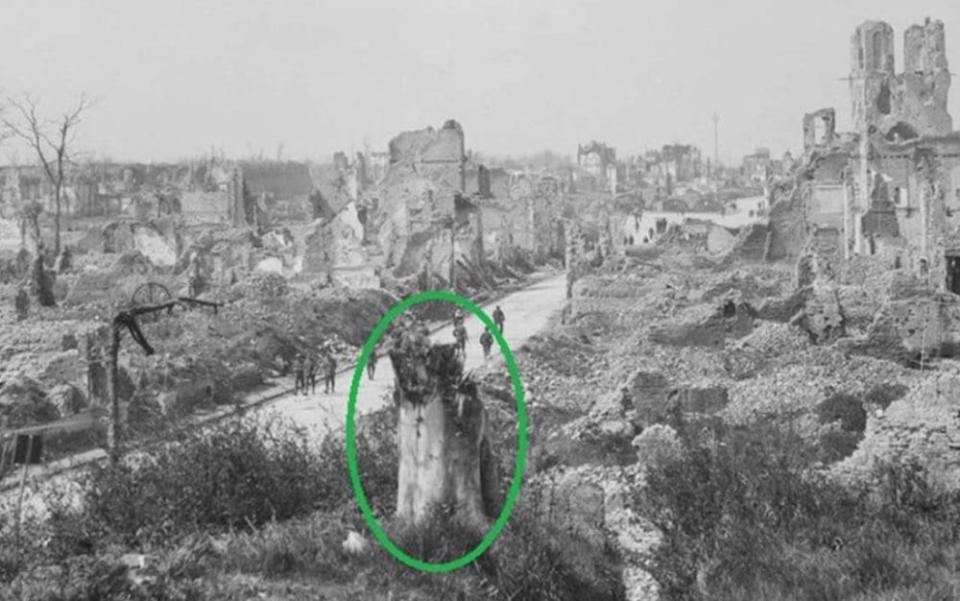Ypres chestnut tree battered but unbowed by wars wins Belgian award
A chestnut tree that survived both the bombardment of Ypres in the first world war and a desperate hunt for firewood during the second has been named Belgium’s tree of the year in recognition of its survival in the face of adversity.
The tree, the sole survivor of a chestnut avenue planted 160 years ago when the city’s medieval fortifications were turned into a public park, had been left as little more than a stump by the brutal warfare that raged around it between 1914 and 1918.
But the tree’s roots were deep and strong enough for it grow back into four separate trunks as Ypres, or Ieper as it is known in Belgium, was rebuilt in the years following the Great War.
It came to flank the rebuilt Menin Gate through which British soldiers had famously marched on their way to the nearby front and from where the last post is still sounded every evening at 8pm by volunteers.

The chestnut then survived the hunt for firewood during Germany’s occupation of Belgium in the second world war, due to the apparent danger of falling branches damaging the nearby homes.
“The people of Ieper cut down many trees,” said Lieven Stubbe, who is head of the local council’s landscape department. “They were cold and needed wood to burn in their stoves. [But] because the tree is on a slope, the trunks threatened to fall on the houses.”
The tree is now 20 metres (65ft) tall with a 30-metre wide crown. The base trunk has a 9.2-metre circumference. It is one of only two trees in Ypres to have survived both world wars. The second is a three-stemmed hazel tree by the city ramparts.
Valentijn Despeghel, a city alderman, said: “The chestnut is a monument, but it also exudes symbolic power. The four-trunk tree illustrates Ieper’s power to survive. It’s a living and especially vital monument that with a bit of luck can live for a further century.”
The tree of the year award comes with a €2,500 (£2,266) prize for the local authority to spend on its preservation. The chestnut will now compete for next year’s European tree of the year award against 15 others from around the continent.

